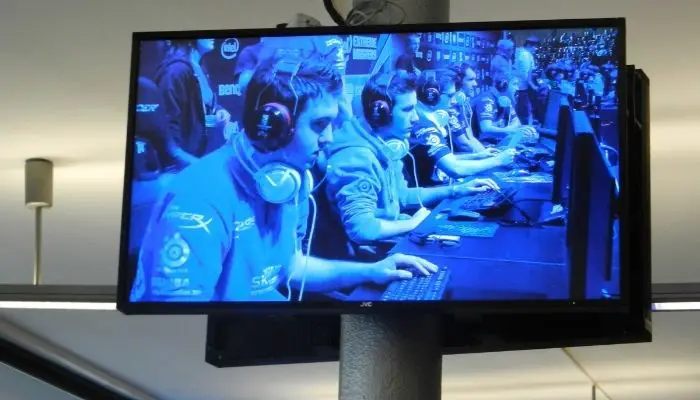Digital video recorder(DVR ) is a term that refers to a device or service that uses to record and save videos. With the launch of TiVo in the late 1990s, DVRs gained popularity.
It is a gadget that records security video from a few or more cameras to a hard disc. You can change the frame rate from actual time to time-lapse to conserve storage capacity. If more than one DVR connects to the same connection, you need to set each DVR to utilize a separate port.
Additionally referred to as a “personal video recorder” (PVR) or “hard disc recorder,” a DVR is a consumer device that enables viewers to pause and rewind any broadcast, cable, or satellite television programme, as well as record and playback selected programmes.
DVRs can be integrated into your cable or satellite provider’s set-top box or purchased separately. While standalone DVR equipment stores recordings on a hard drive, cloud DVR services store them on a distant server maintained by the service provider.
Digital Video Recorder (DVR)
A digital video recorder (DVR) is a device that records video to a local storage device, most often a hard drive. On-site analogue video sources can be recorded on a DVR or captured from a digital source.
DVRs can be attached via coaxial cables to analogue cameras, allowing them to be remotely activated. DVRs provide increased capabilities by finding certain occurrences within recordings or sorting by time and date. When a DVR’s storage capacity reaches, it can automatically overwrite older footage.
What Is the Function of a Digital Video Recorder (DVR)?
DVRs use to save movies and television shows for later viewing. Typically, you can programme your DVR to record specific performances or events as they air automatically.
If you have a favourite show, you can configure it to record only the latest episodes and remove older ones automatically. DVRs equipped with several tuners are even capable of concurrently recording numerous channels.
The DVR allows buffers space on the hard drive to record live television indefinitely. It enables live broadcasts to be paused and rewound. If you miss the opening of a show, you can rewind and skip advertisements.
Apart from television recordings, DVRs may also capture live camera feeds. Typically, these devices store surveillance footage as part of security systems.
How to Connect Multiple DVRs to One Monitor?

Things to Require
You will require the following items:
- an AV signal switcher.
- video cables or RCA audio
An Efficient Way of Connecting Multiple DVRs to One Monitor
If your home equips with many DVRs (digital video recorders) for cable or satellite programmes, you can link them all to a single monitor. Thus, here is a comprehensive guideline that will assist you in connecting Multiple DVRs to single Monitor.
It enables you to view programming on your Monitor from any of your DVRs. Utilizing an AV signal switcher, you can connect multiple DVRs to one Monitor. You can use a coaxial cable or RCA audio/video cables with an AV (audio/video) signal changer to improve signal quality.
- Connect the audio and video outputs of a DVR using one side of an RCA audio/video cable.
- Connect the RCA audio/video cable’s other end to the AV signal switcher’s appropriate audio and video inputs. The DVR’s audio output is connected to the switcher’s audio information, while the DVR’s video output connects to the switcher’s video input.
- Rep steps 1 and 2 for each DVR you wish to connect to the Monitor. Switchers for audiovisual systems are available in a variety of configurations. Even the most affordable switchers support up to four input devices.
- Connect the audio and video outputs on the AV signal changer to one end of another RCA audio/video cable.
- Attach the other end of the RCA audio/video cable to the Monitor’s appropriate audio and video inputs, matching the AV switcher’s audio output to the Monitor’s audio input and the switcher’s video output to the Monitor’s video input.
- You can select which DVR to watch using the push buttons on the AV switcher. Specific models include a remote control that enables you to switch between the signal inputs of various DVRs.
Popular Characteristics
- This device’s ability to fast forward or skip advertisements is one of its most popular features.
- Additionally, it enables users to pause and rewind live television.
- Users may be able to watch and view their favourite shows from anywhere globally using a computer and a DVR remote monitoring capability if the machine is hooked up to The internet, either directly or via a digital cable package. It may be an additional cost and not accessible on all plans.
- However, depending on the device’s configuration, accessibility is typically universal across the home where the connection locates.
- Typically, many stored episodes can be viewed concurrently on different displays — for example; one user can watch one show in the lounge while another watches something utterly different in the room.
- Additionally, it is usual to begin a programme on one device, pause it, and then resume it on a different screen throughout the house.
Benefits of DVR
There are numerous advantages to owning a DVR, and you may already own one if you are a current cable or satellite TV user on a higher-tier plan. A DVR could still be a viable choice if you do not, albeit at a higher monthly lease fee.
Arrangements and Documentation
When recording, you no longer need to bother about timers because you may do so in bulk. Most modern DVRs allow you to browse the TV guide and choose individual movies, games, and television shows. Additionally, you can create a Season Pass.
By purchasing a Season Pass for a show, you are guaranteeing that you will record all future episodes. You can opt to record “Only New” episodes or every episode that airs, in which case you would overwhelm with every rerun of that particular show. It eliminates the need to wait or reset a timer weekly to ensure you don’t miss a specific show.
Capacity Storage
Storage capacity is critical when choosing a DVR, the same as when purchasing VHS tapes with the SLP option to store additional video.
The power of the inserted VHS tape was limited when recording it. When tape space becomes limited, you will force to swap tapes or re-record previously recorded shows.
The beauty of digital video recorders is that they have hard drives. Additionally, many of them are expandable.
Certain providers, for example, Comcast, offer cloud storage for your favourite shows. However, if you’re wondering how often hours of programmes you can record on your DVR, the answer will vary according to the device and the quality of the content.
Standard Definition (SD) recordings typically consume approximately 1GB per hour, whereas high definition (HD) programming consumes around 6GB. As a result, if you like to record high-definition (HD) video primarily, you can anticipate receiving fewer shows on your device.
Disadvantages of DVR
The drawbacks of digital video recorders (DVRs) include the following:
- In comparison to network recording, lower resolutions and frame rates.
- Local cabling and connectivity are required.
- With several cameras and locations, installation can complicate.
- A separate power supply is necessary.
- Not compatible with IP cameras
- Only a few models equip to record audio.
- With storage costs and cloud-based services decreasing, NVRs have mostly supplanted analogue DVRs in today’s security surveillance systems.
FAQs (Frequently Asked Question)
Can I Connect One Camera to Two DVRs?
Using video distributors and multiplexers, it is possible to reasonably connect footage from CCTV cameras to several monitors. Additionally, you may link one or more extra spot monitors to the camera. The diagram below shows how to connect video from four CCTV cameras to a DVR and four monitor screens.
Can You Connect Two Hikvision DVR?
Choose My Shared Devices from the drop-down menu. Select the Share Device option. Enter the hik-connect account’s e-mail address to share with, choose the device to share, and click Share. Configure more than live view options or limit the number of cameras watched.
Can You Connect a DVR Wirelessly?
Typically, the DVR should be hard-wired to the router through a LAN internet cable. However, Netgear offers an adaptor that enables wireless communication between the DVR and the router. Other WiFi adapters will not work since your DVR cannot get the required drivers.
Conclusion
Specific DVR systems include twin tuners, enabling users to record several programmes simultaneously on multiple channels. You also can record two programmes while viewing a third pre-recorded show on some devices.
An AV signal switcher with coaxial wire or RCA audio/video connections links multiple DVRs to a single monitor. I’m expecting that after reading this guide, you will understand How to Connect Multiple DVRs to One Monitor?
DVRs store shows in a convenient collection that the users can access at any time. Because the shows should record on the DVR’s hard drive, no rewinding or fast-forwarding is required to play a specific show.
While DVRs make it easier to record your favourite episodes weekly or daily, they also make watching more television.

